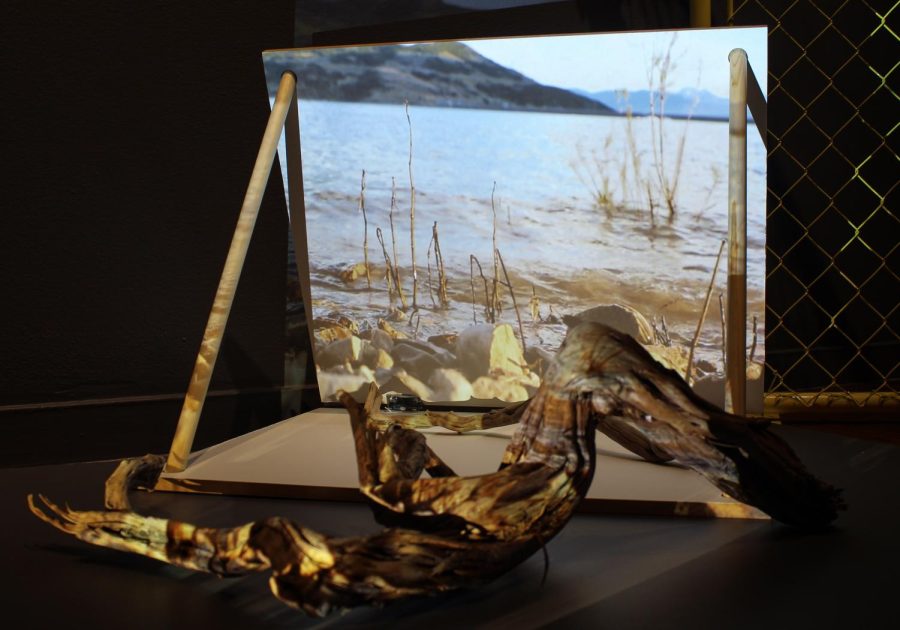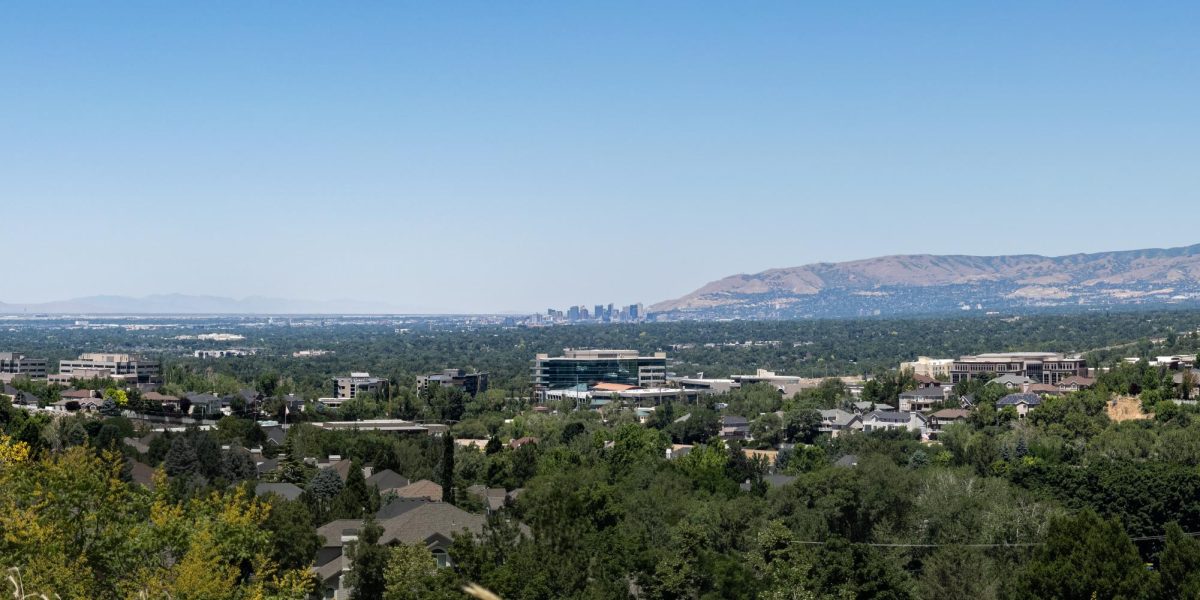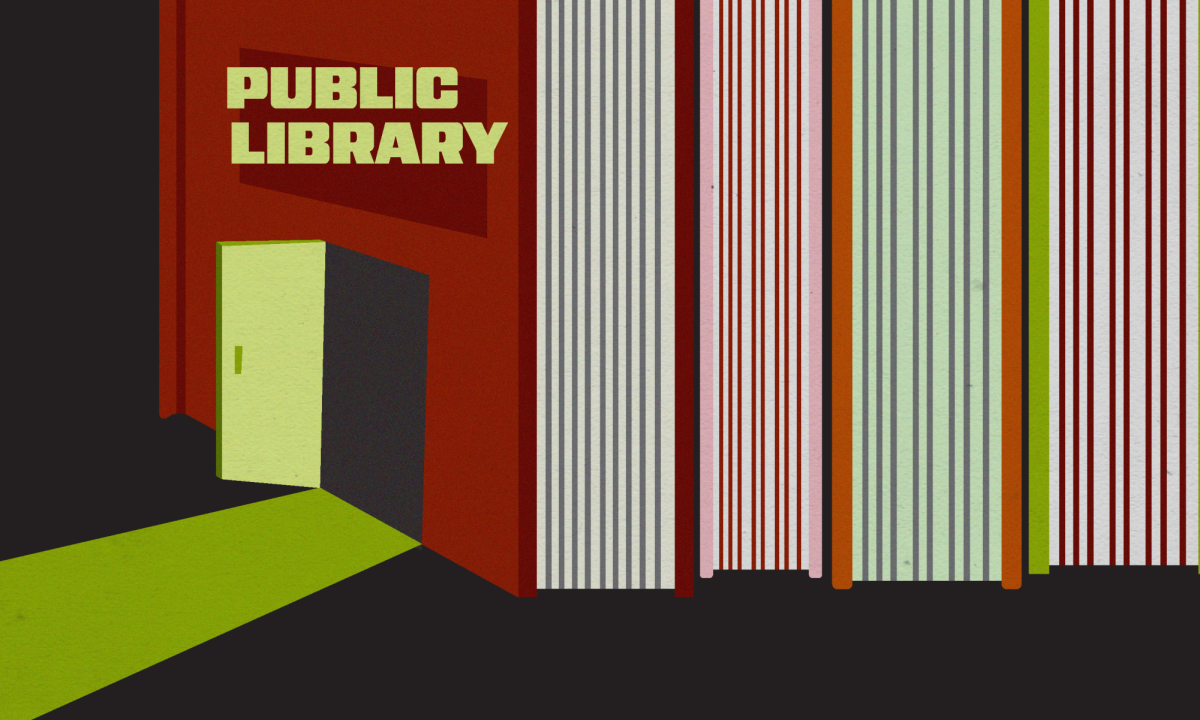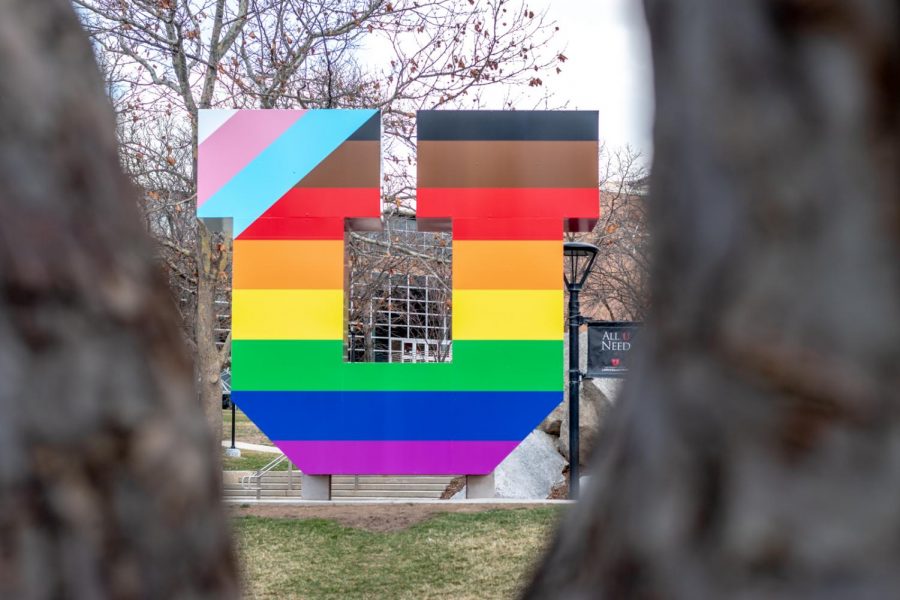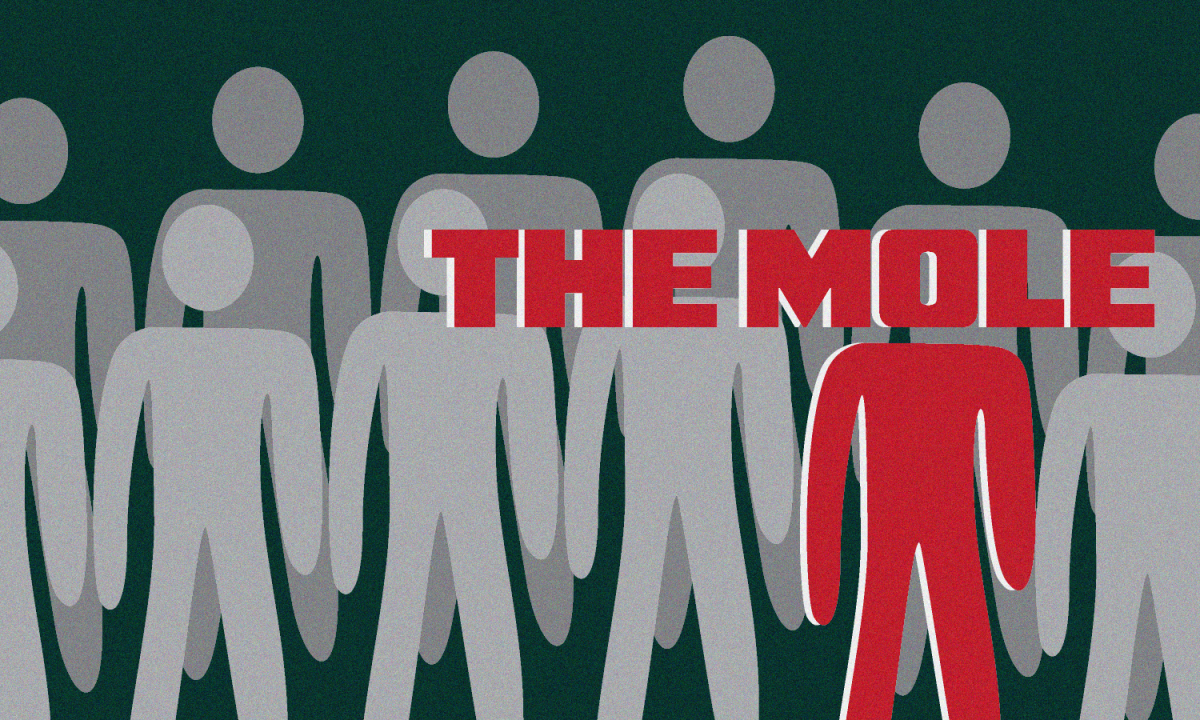A Climate Dystopia Displayed at the UMOCA with ‘the weight of a cloud’
A portion of the “The Weight of a Cloud” by Tiana Birrell that is currently featured at the Utah Museum of Contemporary Art in Salt Lake City, on Saturday, Nov. 6, 2021 (Photo by Brooklyn Critchley | The Daily Utah Chronicle)
December 3, 2021
Walking into UMOCA’s Exit Gallery, one wouldn’t realize they are entering a sort of uncanny valley. The lush green landscapes and flowery imagery draws you in, but upon closer inspection, you see scenes of burning forests, nuclear towers and animal skulls. This eerie imagery has been referred to as “environmental uncanny,” bringing the haunting pieces from these artists to life.
Uncanny Environmental Landscape by Pedersen
Artist Nick Pedersen’s “Slow Apocalypse” explores ideas of human-caused climate change through imagined, hyper-realistic digital landscapes. Each artwork examines the tension between the natural and human-made world, in densely packed scenes that blend the two together.
There is an almost sobering effect looking at these artworks. This deep melancholy cuts through even the most vibrant of colors and lushest greenery — sorrowful eyes stare out at you as you watch homes burn as trees are cut down.
Grounding the Cloud with Birrell
Issues surrounding climate change often feel far from home, removed from our day-to-day. Local artist Tiana Birrell identifies how climate change affects Utah with their latest project “the weight of a cloud.”
I am sure by now almost everyone has used the “cloud” before to store some part of their digital presence. Whether a Google Doc has autosaved your latest assignment, you’ve stored photos of a cool flower you saw outside or shot an email to a professor, we’ve all stored something in the digital cloud.
While the term cloud seems light, ephemeral and airy, Birrell draws our attention to the very real and physical nature of the “cloud” through this installation. The work shows stacks of data servers and miles of electrical wires that house the cloud, the things that tether it to the Earth despite what the name suggests.
In the Salt Lake Valley alone there are over 15 data centers, all requiring massive amounts of natural resources to operate. One center, where the NSA tethers their cloud, uses 1.7 million gallons of water daily to cool its servers. Birrell makes us question why these “water-sucking panopticon” make their homes in Utah — the second driest state — during one of the worst droughts it’s seen in decades.
Activating Space and the Viewer
I often find these kinds of exhibitions somber and they can leave me feeling defeated, but something about these installations at the UMOCA is different. There is something I cannot put into words just yet, something activating about the shows. The direct engagement between the exhibit and the viewer has an almost energizing quality, leaving us with the knowledge of the uncanny environment and how we can impact our landscapes.


